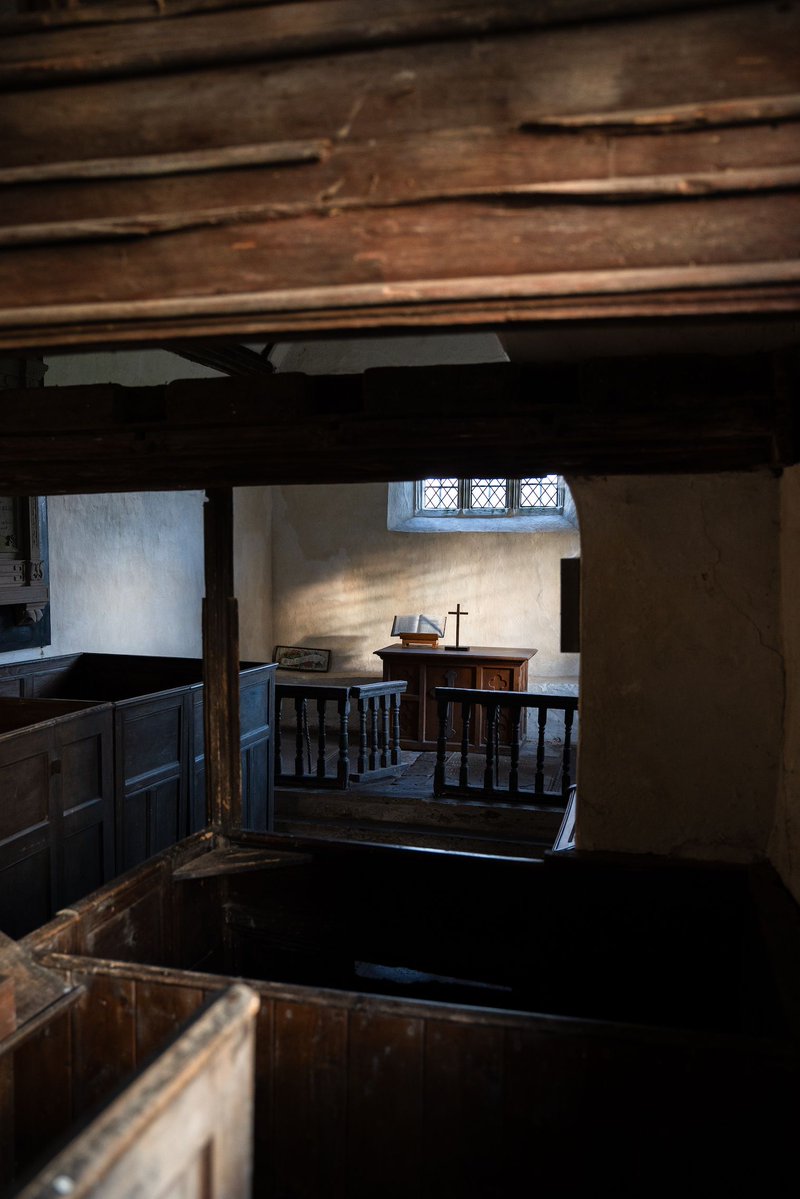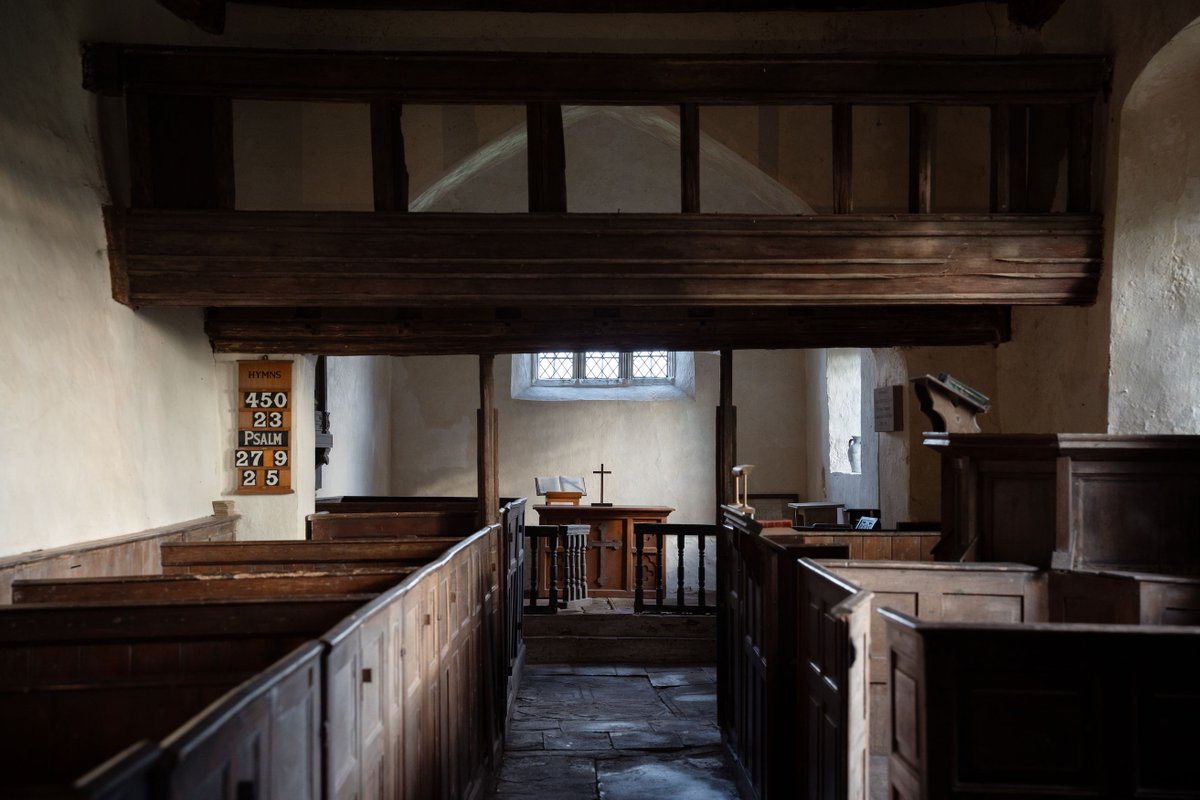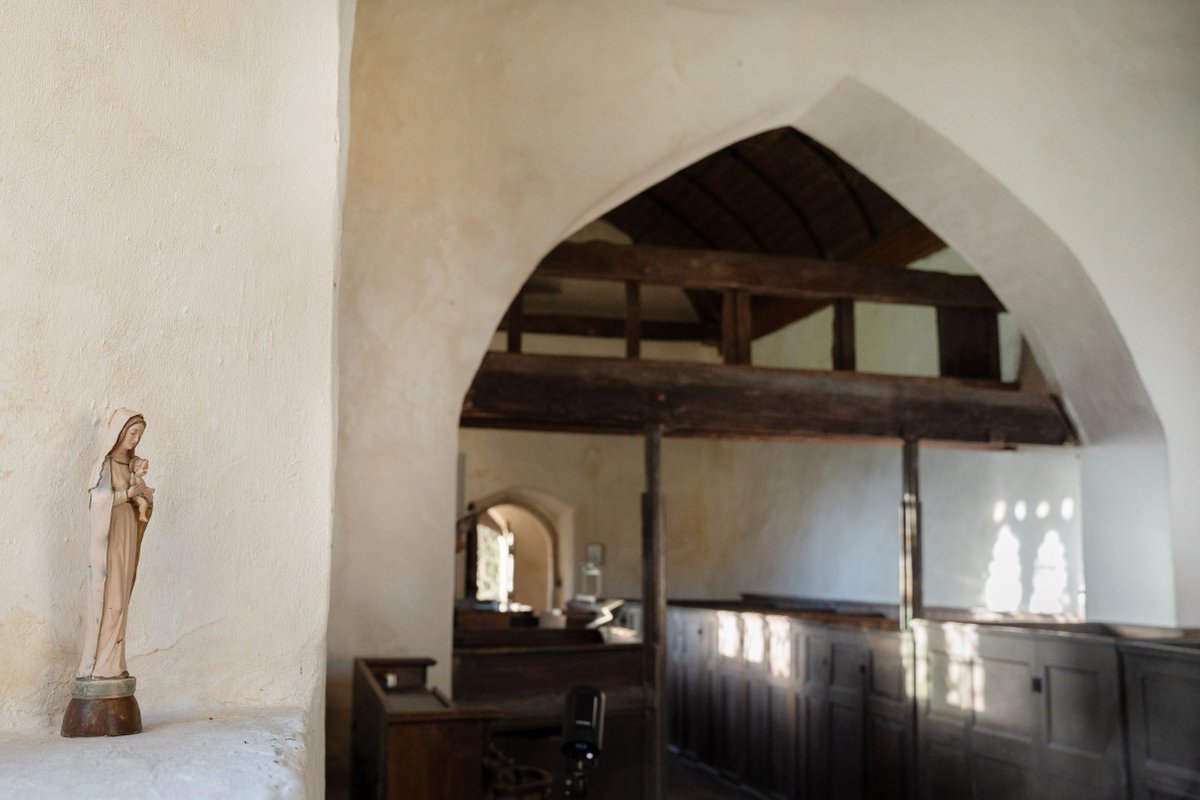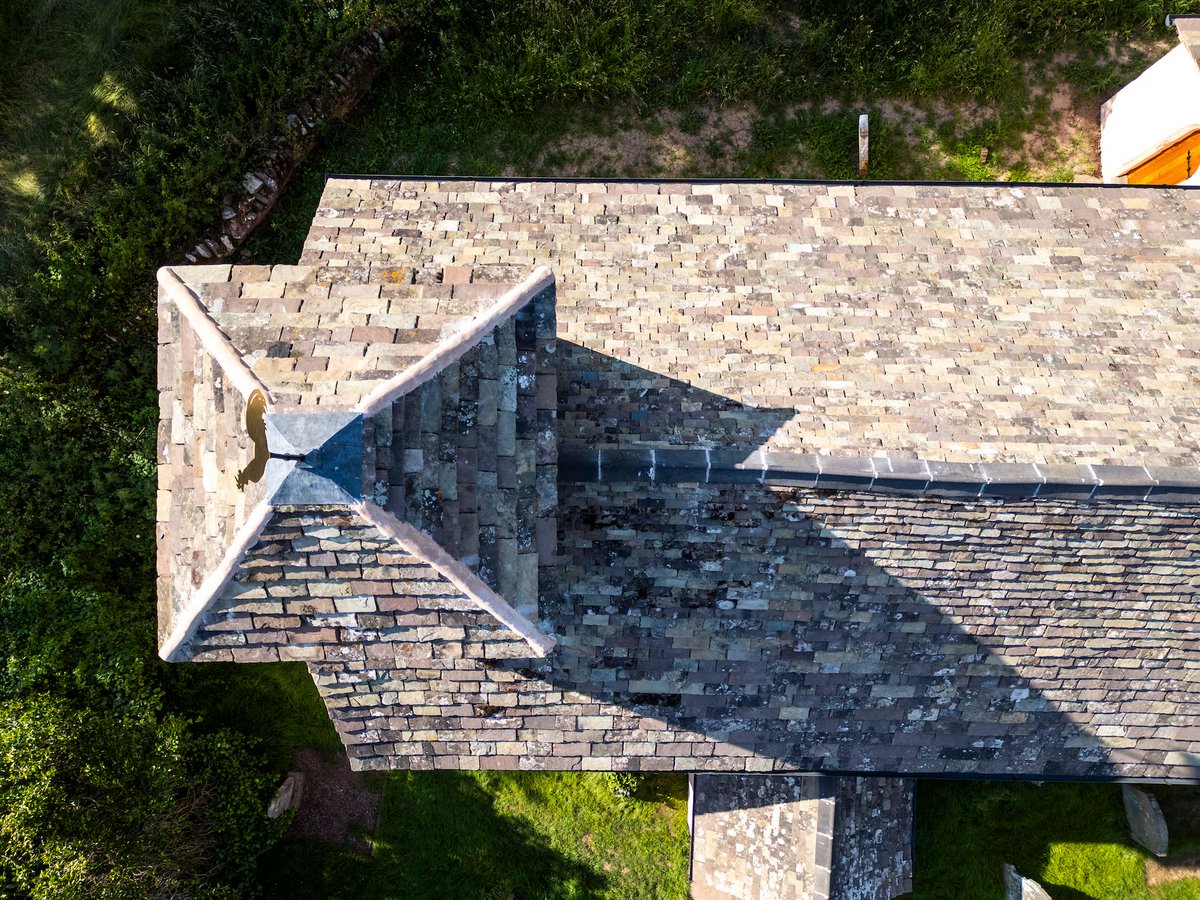In churches all across this island are traces of rood-screens. Sometimes just the rood-beam remains, sometimes high in a wall a door that leads to nowhere...
In Wales, we have eight rood-screens in our care, today’s #thread celebrates their craftsmanship and survival.
In Wales, we have eight rood-screens in our care, today’s #thread celebrates their craftsmanship and survival.

The majestic 15th-century roodscreen is the glory of Llananno church, Powys. The rood-beam trails with vines, pomegranates and wyverns. There are thirty-four carved coving panels. The rood-loft above carries twenty-five canopied niches framing Biblical figures.
2/
2/

St Brothen’s, Gwynedd is a 13th-century church with awe-inspiring woodwork from the 15th century. The screen runs to nine bays with simple chamfered edges. Like many others it lost its rood loft and the rood itself, after the destruction of roods by government order in 1548.
3/
3/

The most complete screen in our care is at Llanelieu, Powys. Carved in the 14th century, the red background is peppered with stencilled white roses. In the centre, a cross is picked out in bare wood. It’s the ghostly reminder of the rood - crucifix - that was lost.
4/
4/

The screen at Llangwm Uchaf in Monmouthshire was carefully restored in the 19th century, but most the woodwork survives from the 1400s. The rood-loft – the walkway in line with the window heads – is so intricately carved and is accessed by a spiral staircase in the tower.
5/
5/
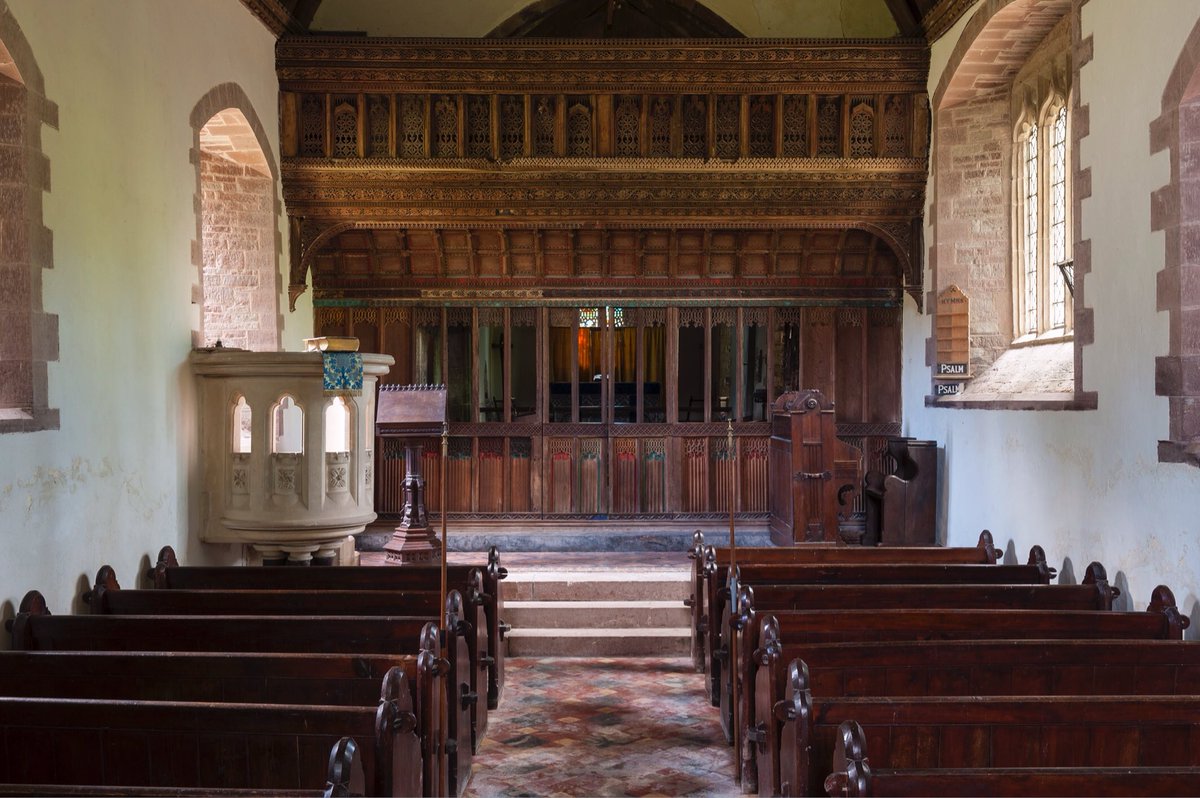
At Derwen in Denbighshire, unusually, the richly carved rood-loft is the main survivor. On top of this loft, the rood would have been erected- a crucifix, flanked by figures of the Virgin Mary and St John the Baptist. Tantalisingly, the socket for the rood is still visible.
6/
6/
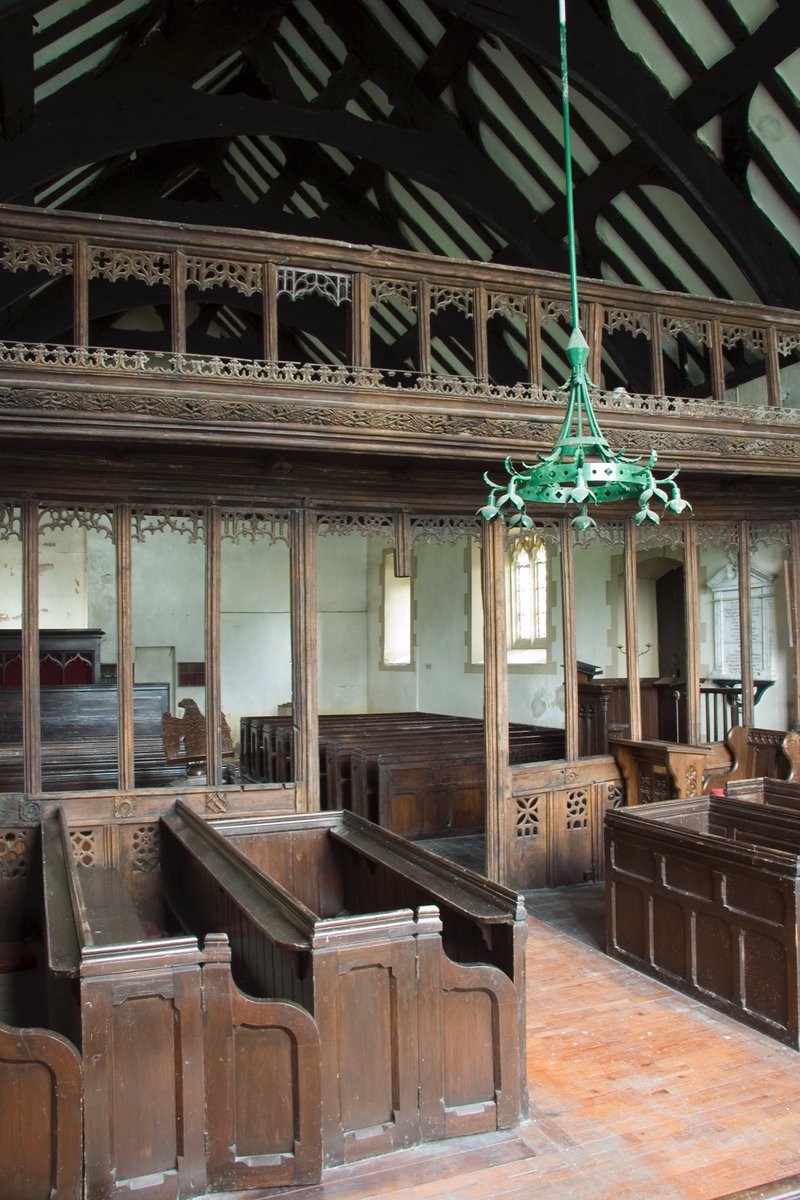
The carcass of the screen is all that remains at Gwernesney, Monmouthshire. The hefty 15th-century rood-beam is carried by stone corbels and retains a foliate trail of decoration. Parts of an earlier screen were roughly jointed together to form a baptistry at the west end.
7/
7/
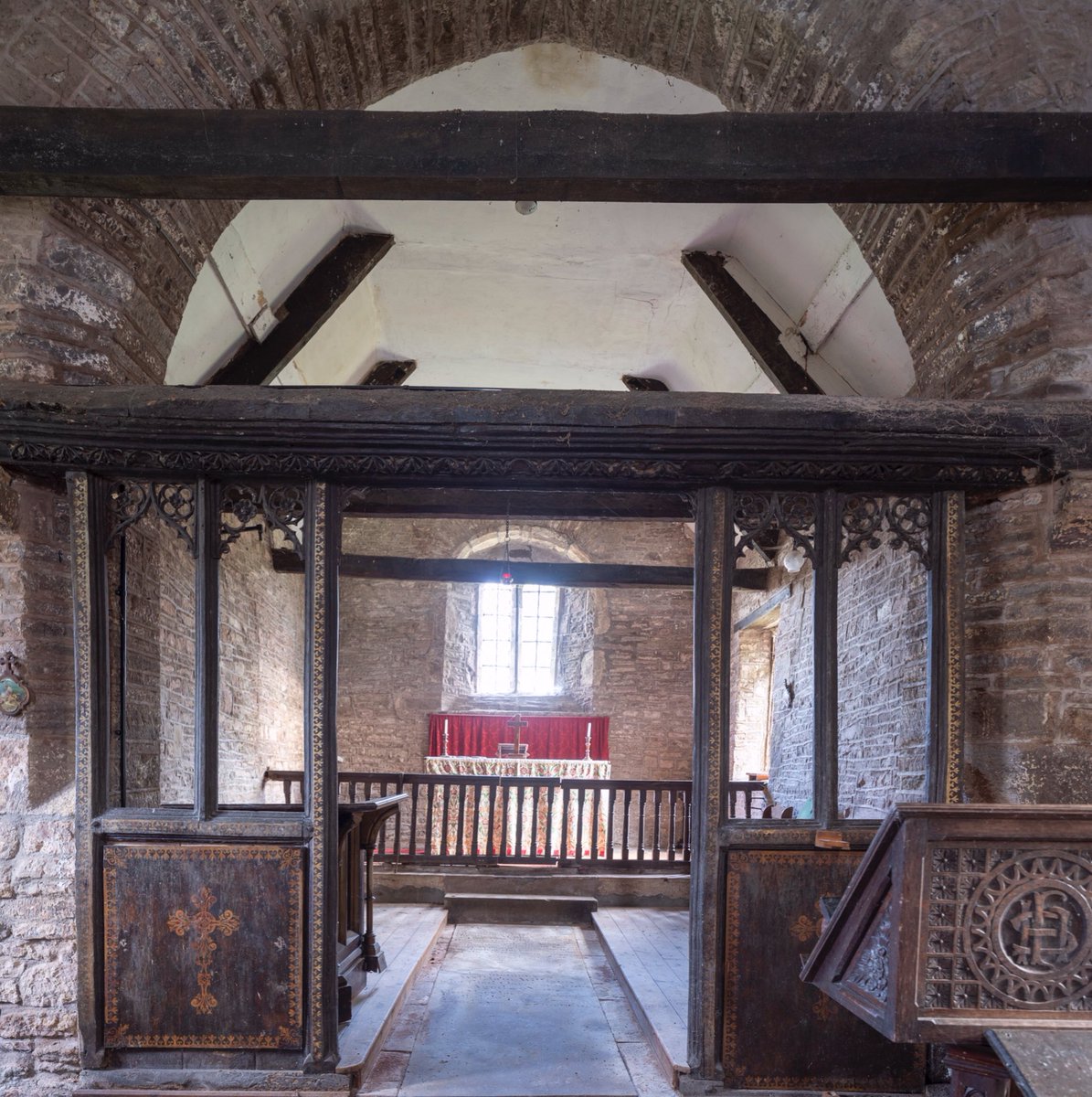
The 1888 sgraffiti interior steals the show at Llanfair Kilgeddin. Few stop to admire the medieval roodscreen. Little of the medieval church remains, but this small screen separating the nave from the chancel is a key survivor. The large cross was added in the 20th century.
8/
8/

Not far away in the tiny church of Llangeview, Monmouthshire the skeleton of a rood-loft from the 1400s hangs over the rows of 18th-century box pews. They create a curious juxtaposition.
9/
9/

Eamon Duffy described roodscreens as 'the largest and most complex single piece of furniture in the late-medieval parish church... a feature of every parish in the land '. And while screens, lofts and beams remain, not a single rood has survived anywhere in the country.
10/10
10/10

• • •
Missing some Tweet in this thread? You can try to
force a refresh











